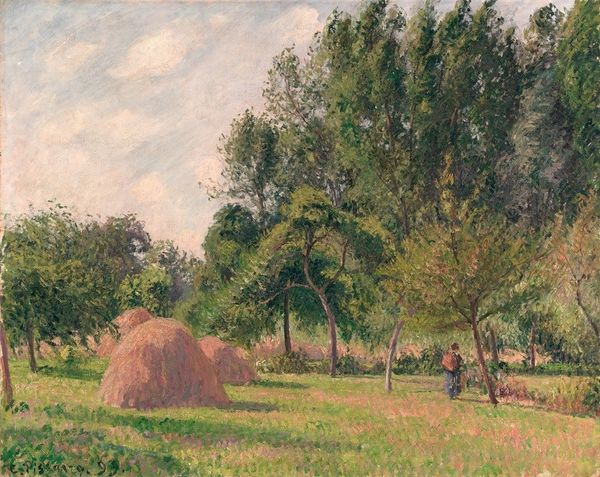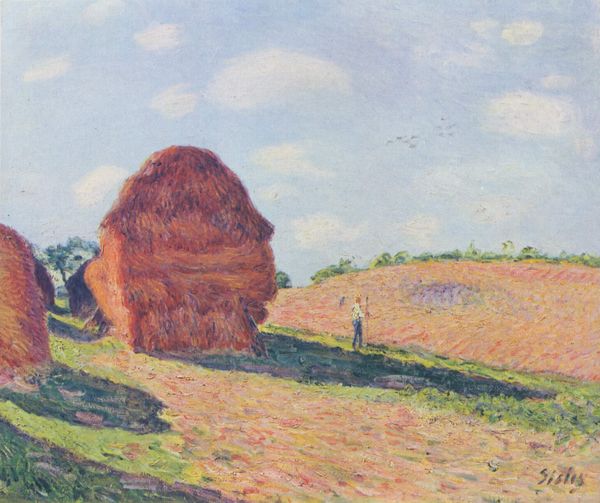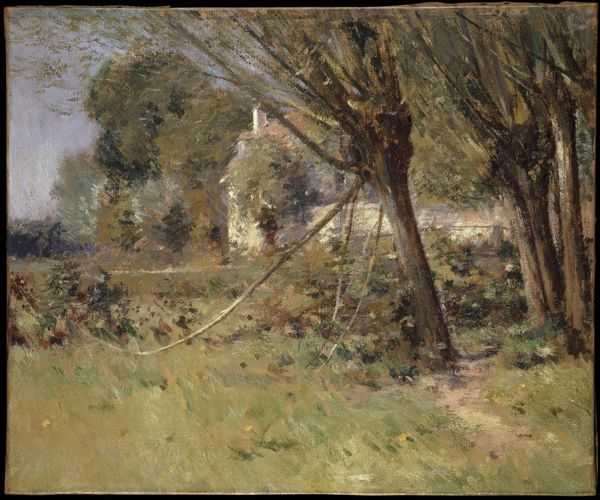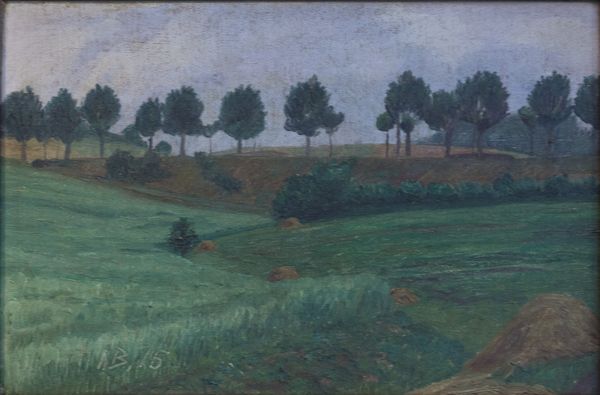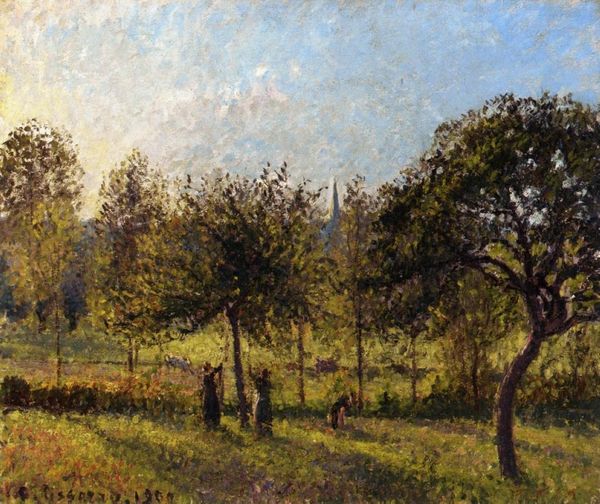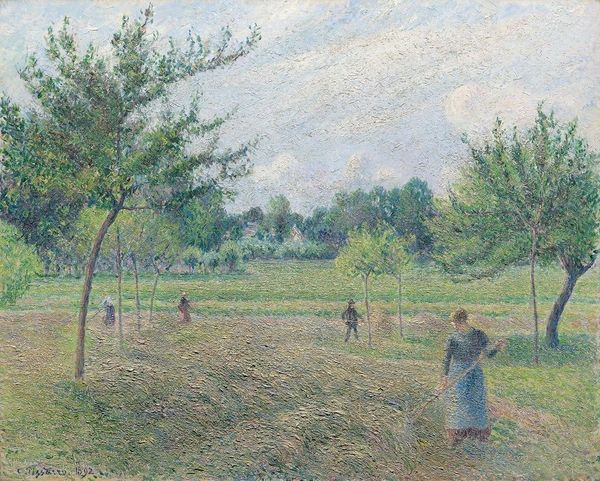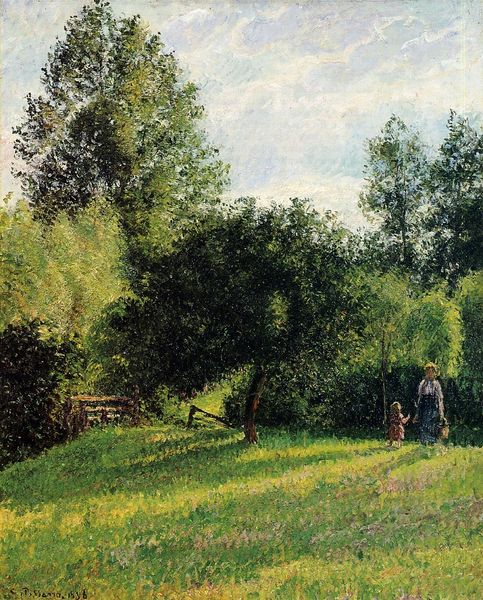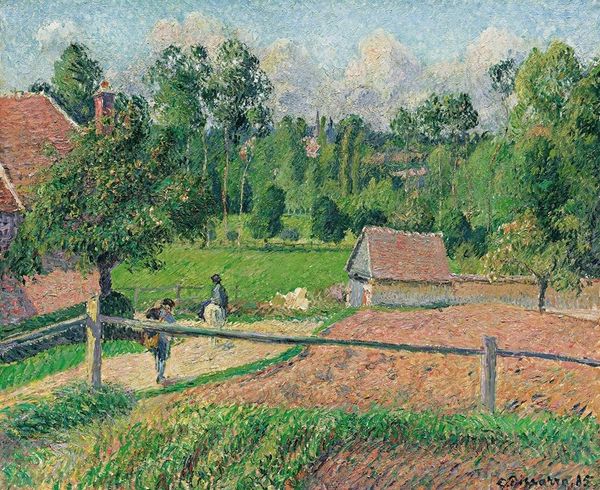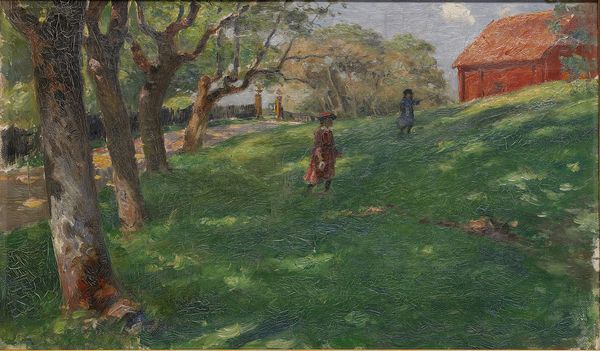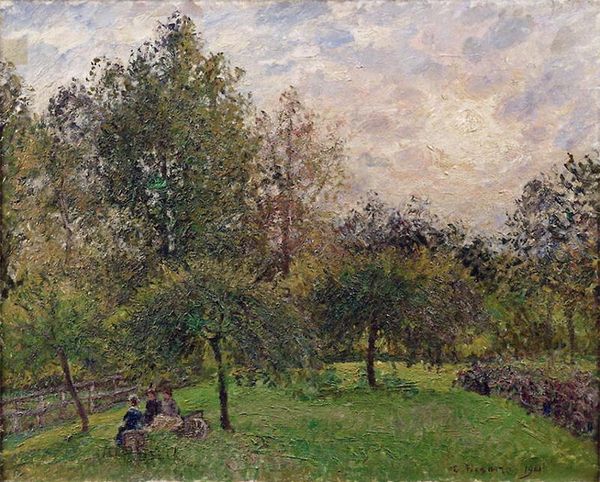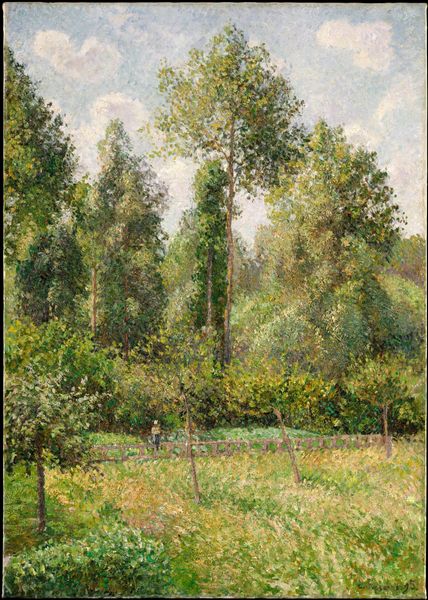
Dimensions: 25 x 31 1/2 in. (63.5 x 80 cm)
Copyright: Public Domain
Curator: This is Camille Pissarro's "Haystacks, Morning, Éragny" from 1899, currently residing at the Metropolitan Museum of Art. He captures a tranquil moment in the fields of rural France with those famous haystacks. Editor: Ah, the golden haystacks—they give the impression of warm sunlight resting on summer stubble. There is an honest rawness here. I love the little figure placed almost hidden between the trunks of the tall trees. Curator: I wonder about the hands that actually stacked those hay bales, about the repetitive strain and callouses formed to get them so uniformly round. Do you see how Pissarro is interested in how this harvest activity shapes the rural landscape? Editor: Precisely. Look closely at the quick dabs and strokes that depict the landscape; it speaks volumes about the labor of the farmers who cultivated the land. And this connects so much more than just agriculture—it goes into the materiality of painting too! The repetitive brushstrokes and layering of color—akin to physical, skilled work! Curator: Absolutely, a dialogue between physical toil in nature and applying oil paint on canvas. And he was committed to portraying rural life in a very democratic and non-idealized way. What thoughts emerge as you explore how he renders light here? Editor: I think the gentle and airy atmosphere contrasts nicely with the actual hard work portrayed within it. Pissarro builds a certain dreamlike field by utilizing pointillist-style methods within the Impressionist style; the layers build volume, and you want to sink your bare toes in the short, dappled grass! I do find it more visually compelling to consider that each dab signifies real action to depict nature as genuinely observed from life rather than imagined! Curator: I appreciate how he captures an ephemeral instant yet reminds us about more grounded themes of farming, craft, and routine. It asks: who actually works the land in that landscape painting you buy? Editor: Agreed. There is profound meaning in portraying ordinary laborers performing everyday tasks as noble and valuable! Curator: Definitely. Next time you’re near the painting, ask yourself—what am I overlooking? What's the story beneath what's been painted?
Comments
No comments
Be the first to comment and join the conversation on the ultimate creative platform.
